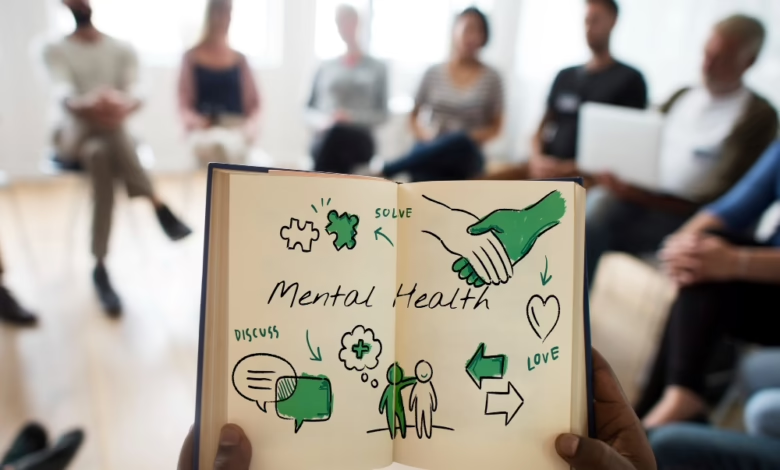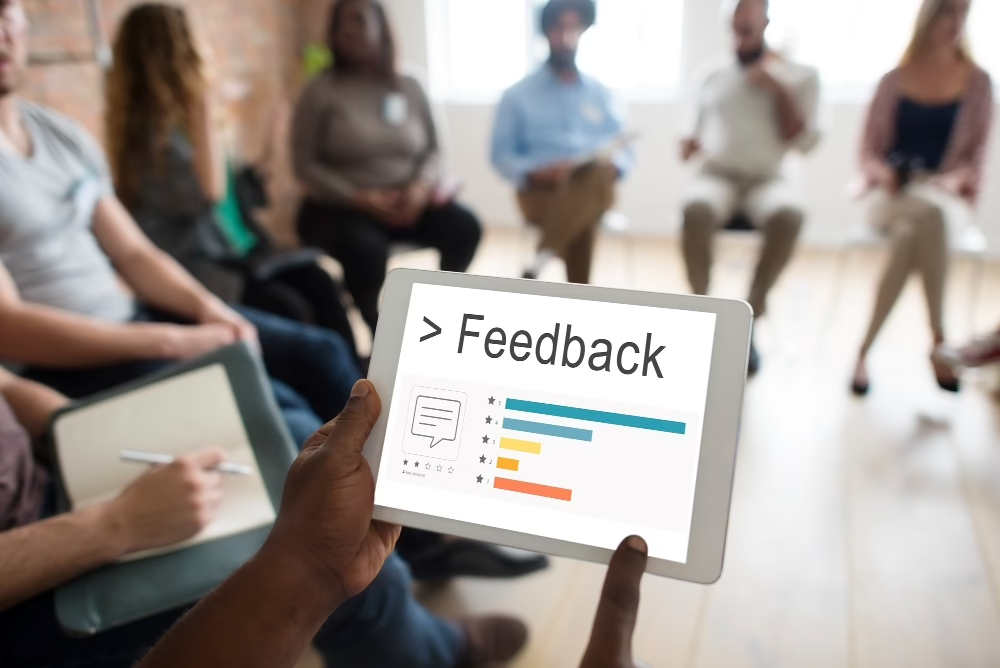Mental Health Awareness Event: 10 Steps to Creating a Powerful and Impactful Event

Mental health conversations remain challenging in many communities, leaving people struggling in silence. When organizations attempt to host awareness events, they often face uncertainty about where to begin or how to create a meaningful impact. These barriers can lead to missed opportunities for vital community support and education. But there’s a solution: a structured approach to planning mental health awareness events that ensures both sensitivity and effectiveness.
Essential Steps for Planning an Impactful Mental Health Awareness Event
Creating meaningful mental health awareness events requires careful planning and thoughtful execution. Whether you’re organizing a workplace wellness program or coordinating a community-wide mental health campaign, success lies in understanding the nuances of this sensitive topic.
By following proven strategies for mental health initiative planning, you’ll be equipped to develop programs that resonate deeply with participants while fostering genuine understanding and support. Our comprehensive guide breaks down each crucial element, from initial coordination to measuring lasting impact, ensuring your event creates positive change in your community.
1. Strategic Planning and Goal Setting
Before launching into event logistics, establishing clear and measurable objectives sets the foundation for success. Your awareness campaign goals should address specific community needs, whether that’s reducing workplace stigma or increasing access to mental health resources. A local tech company recently transformed its workplace culture by setting precise targets: they aimed to train 80% of managers in mental health first aid and connect 100% of employees with wellness resources within six months.
When planning your mental health awareness event (Check Types of Mental Health Awareness Events here), start with quantifiable outcomes. Your strategy might include tracking attendance rates, measuring changes in participant awareness through pre and post-event surveys, or monitoring resource utilization rates. These metrics help demonstrate real impact and justify future initiatives.
Creating a strategic event organization framework ensures every element serves your core mission. Consider breaking down your mental health program outcomes into short-term wins and long-term goals. For example, while immediate feedback might show an increased understanding of mental health topics, long-term tracking could reveal sustained improvements in workplace wellness program participation or community resource engagement.
Your targeted awareness initiatives should build upon each previous success, creating momentum for lasting change. This methodical approach to impact measurement planning helps refine future events and builds credibility with stakeholders, sponsors, and participants.
2. Stakeholder Engagement and Partnership Building
Building upon your strategic goals, successful mental health partnerships form the backbone of any impactful event. A regional business association recently demonstrated this power when they connected with local healthcare providers, forming alliances that brought together counselors, wellness coaches, and mental health specialists. Their resource partner networking efforts resulted in a comprehensive support system that served thousands of employees across multiple organizations.
Strong community stakeholder engagement amplifies your event’s reach and credibility. When planning your mental health awareness event, focus on creating meaningful connections with organizations that share your vision. One effective approach is establishing a steering committee comprising healthcare provider collaborations and mental health organization alliances. This committee can guide program development, share resources, and ensure diverse perspectives are represented.
Expert speaker coordination becomes significantly easier through these partnerships. Your network of mental health professionals can recommend qualified speakers, while sponsor recruitment efforts benefit from established relationships with community leaders who understand the value of mental wellness initiatives. This collaborative approach creates a sustainable framework that strengthens future programs and builds lasting community connections.
3. Content Development and Programming
With your stakeholder partnerships in place, creating compelling mental health education content becomes a collaborative endeavor. A university wellness center exemplified this approach when they developed their awareness program curriculum through focus groups with students, faculty, and mental health professionals. Their workshop planning process resulted in sessions that resonated deeply with their campus community, leading to record-breaking attendance and engagement.
Your mental health awareness event content should balance educational material creation with interactive elements that encourage participation. Consider structuring your session planning around three key components: expert-led presentations that share current research and best practices, interactive workshops that build practical skills, and facilitated discussions that allow participants to process and connect with the material. One community center saw remarkable results when they included both professional insights and personal recovery stories in their presentation development.
Successful mental health resources must be culturally relevant and accessible to diverse audiences. Work with your stakeholders to ensure your educational materials address various cultural perspectives, learning styles, and comfort levels. This thoughtful approach to content creation helps build trust and encourages meaningful participation from all community members.
4. Venue Selection and Setup
After finalizing your content strategy, selecting the right mental health event venue becomes crucial for creating an atmosphere that supports your programming goals. A community wellness center transformed its traditional conference space into a welcoming environment by carefully considering space requirements and accessibility planning. They created designated quiet zones, comfortable seating arrangements, and private consultation areas, which participants later credited as essential to their positive experience.
Venue logistics extend beyond basic amenities – they shape how attendees interact with your content and each other. When planning your mental health awareness event, prioritize environmental considerations that promote psychological safety. This might include natural lighting, sound-dampening elements, and clear signage for navigation. Safe space creation involves a strategic event space setup that allows attendees to engage comfortably with sensitive topics.
Your venue should accommodate both large group sessions and intimate conversations. Consider how the space flows between activities, ensuring smooth transitions while maintaining privacy where needed. A thoughtful layout can significantly influence participant engagement and overall event success, making venue selection a cornerstone of your event’s impact.

5. Speaker and Expert Recruitment
With your venue secured, assembling the right team of mental health speakers becomes your next priority. Professional presenter recruitment requires careful consideration of expertise, communication style, and audience connection. A successful corporate wellness program demonstrated this perfectly when they paired clinical psychologists with lived experience speakers, creating powerful sessions that resonated with employees at all levels. Their expert panel coordination brought together diverse perspectives that sparked meaningful conversations and lasting change.
When organizing your mental health awareness event, focus on keynote speaker selection that aligns with your goals while complementing your venue’s atmosphere. Mental health professional engagement should extend beyond presentations – consider how experts can facilitate breakout sessions or provide one-on-one consultations. A comprehensive facilitator training program ensures all speakers understand their roles and can handle sensitive topics appropriately.
Balance is key in creating your speaker lineup. While academic experts bring credibility through research and clinical experience, lived-experience speakers add authenticity and relatability. This combination helps break down barriers and creates an environment where attendees feel both educated and understood, leading to deeper engagement with the event’s message.
6. Marketing and Communication Strategy
Now that your speaker lineup is confirmed, crafting a thoughtful outreach strategy becomes essential. A local mental health coalition successfully demonstrated this through its awareness campaign marketing, which focused on messages of hope and community support. Their promotional material development featured genuine stories and empowering language, resulting in unprecedented community participation and engagement.
Your mental health awareness event deserves a communication planning approach that balances visibility with sensitivity. Social media promotion should highlight speaker expertise and event offerings while maintaining appropriate boundaries. One effective technique involves creating audience engagement tactics that encourage the sharing of resource information rather than personal struggles. A healthcare network achieved remarkable results by focusing its marketing on educational value and professional development opportunities, making its event accessible to a broader audience.
Strategic mental health event promotion extends beyond traditional advertising. Consider developing a multi-channel approach that includes targeted email campaigns, community partner networks, and professional associations. This comprehensive strategy ensures your message reaches those who need it most while maintaining the dignity and privacy of potential participants. Remember to provide clear information about available support resources in all promotional materials.
7. Resource Development and Distribution
Building on your communication strategy, and creating valuable mental health resources requires meticulous attention to detail and relevance. A regional healthcare network exemplified excellence in information packet creation by collaborating with local providers to develop a comprehensive support service directory. Their wellness tool development process included input from mental health professionals, resulting in practical, user-friendly materials that participants could implement immediately in their daily lives.
Your mental health awareness event should feature carefully curated takeaway material preparation that serves both immediate and long-term needs. Consider developing a resource guide compilation that includes crisis intervention materials, local support services, and self-help tools. One school district found success by creating both digital and physical resource packages, ensuring accessibility for all participants regardless of their technological preferences.
Effective distribution involves strategic planning and timing. Make resources available before, during, and after the event through various channels. This approach allows participants to preview materials, reference them during sessions, and continue their learning journey afterward. Consider creating QR codes linking to digital resources, while maintaining printed versions for those who prefer physical materials.
8. Safety and Support Planning
While comprehensive resources provide essential information, robust event safety protocols ensure participants feel secure throughout their experience. A corporate wellness program showcased exemplary mental health support planning by establishing a network of trained professionals strategically positioned throughout their venue. Their crisis response preparation included clear communication channels and designated response teams, creating a safety net that allowed participants to engage fully with challenging topics.
Planning your mental health awareness event requires careful attention to emotional safety measures. This includes thorough support staff coordination and wellness check procedures integrated seamlessly into the program schedule. A university successfully implemented a system where trained personnel conducted subtle check-ins with participants during breaks, providing immediate support when needed.
Psychological first aid becomes crucial when addressing sensitive topics. Create a detailed action plan that outlines response procedures for various scenarios, from mild distress to crises. Train all staff members in basic mental health first aid, ensuring they can recognize warning signs and respond appropriately. This comprehensive approach to safety planning helps create an environment where participants feel protected and supported while engaging with potentially triggering content.
9. Interactive Element Integration
With safety protocols established, creating meaningful engagement activities becomes essential for lasting impact. A wellness center revolutionized its approach by introducing hands-on learning activities that catered to different comfort levels. Their experiential components included stress-management workshops, guided meditation sessions, and creative expression stations, which participants could explore at their own pace.
When designing your mental health awareness event, thoughtful audience participation planning ensures everyone finds their comfort zone. Group discussions work best when structured in small clusters, allowing participants to share insights while feeling secure. A community organization successfully implemented interactive workshops where attendees could choose between various participatory exercises – from journaling circles to art therapy sessions. This flexible approach allowed individuals to engage in ways that felt natural and meaningful.
The key to successful engagement lies in variety and choice. Consider offering simultaneous activities that appeal to different learning styles and comfort levels. Some participants might prefer structured group discussions, while others connect better through creative or movement-based exercises. This multi-faceted approach to interaction creates a rich, inclusive experience that resonates with diverse audiences.

10. Evaluation and Follow-up Planning
Building upon the interactive elements of your event, establishing robust impact assessment methods ensures continuous growth and improvement. A healthcare organization demonstrated this effectively by implementing a multi-phase feedback collection system that tracked both immediate reactions and long-term behavioral changes. Their success metrics tracking revealed that participants who received structured follow-up support were 60% more likely to maintain positive mental health practices.
Your mental health awareness event should include comprehensive post-event evaluation strategies that measure both quantitative and qualitative outcomes. Consider implementing surveys at different intervals – immediately after the event, one month later, and three months later – to gauge the lasting effects of your program. A university wellness program successfully used this approach for outcome measurement, which helped them refine their support services based on actual participant needs.
Continuous improvement planning requires a systematic analysis of collected data and participant experiences. Create a framework for long-term impact monitoring that includes regular check-ins with participants, assessment of resource utilization, and tracking of community engagement levels. This systematic approach to evaluation ensures your future events become increasingly effective at supporting mental health awareness and positive change.
FAQs About Creating Mental Health Awareness Event
- How do I ensure my mental health awareness event is inclusive and culturally sensitive?
Collaborate with diverse community leaders and cultural organizations during the planning phase. Include representatives from various cultural backgrounds on your planning committee. Ensure materials are available in multiple languages and consider different cultural perspectives on mental health. Train speakers and staff in cultural competency, and incorporate diverse healing practices and approaches to mental wellness that resonate with different communities.
- What safety measures should be in place during a mental health awareness event?
Establish a dedicated crisis response team staffed by mental health professionals. Create marked quiet spaces for emotional regulation. Implement a buddy system for participant support. Have emergency protocols in writing and ensure all staff members are trained in them. Provide emotional support to animals in designated areas when appropriate. Post-crisis hotline numbers prominently and have on-site counselors available throughout the event.
- How can I measure the success of my mental health awareness event?
Utilize pre and post-event surveys to measure knowledge gains and attitude changes. Track resource utilization rates following the event. Collect both anonymous feedback and voluntary testimonials. Monitor social media engagement and community response. Conduct follow-up assessments at regular intervals to measure the long-term impact on behavior change and resource accessibility.
- What are the essential resources needed for a mental health awareness event?
Core resources include qualified mental health professionals, crisis intervention specialists, and trained support staff. Educational materials should feature evidence-based information, local resource directories, and self-help tools. Technical requirements include proper audiovisual equipment, comfortable seating arrangements, and private consultation spaces. Ensure adequate supplies of printed materials, comfort items, and refreshments.
For additional support in organizing a mental health awareness event, consider exploring Mental Health First Aid Training for relevant skills, or use Eventbrite to manage your event logistics and promotion efficiently.
Conclusion
Creating impactful mental health awareness events requires dedication to both detailed planning and compassionate execution. Your careful attention to each step, from initial strategy to final evaluation, builds a foundation for meaningful community change. As you move forward with your event planning, remember that every thoughtful decision contributes to breaking the stigma and fostering healing. Start your journey today – your community needs these crucial conversations and connections.



